Scientists from the Australian National University utilized seismic waves created by earthquakes to gaze into the Earth's enigmatic liquid center.
By following the journey of these waves through the Earth, the scientists discovered a layer approximately hundreds of kilometers thick where their speed was 2% below average.
This doughnut-shaped formation circles the Earth’s liquid outer core along a path parallel to the equator, potentially playing a key role in generating our planet's shielding magnetic field.
Professor Hrvoje Tkalčić, who led the research, states: "The magnetic field is an essential component required for sustaining life on Earth's surface."

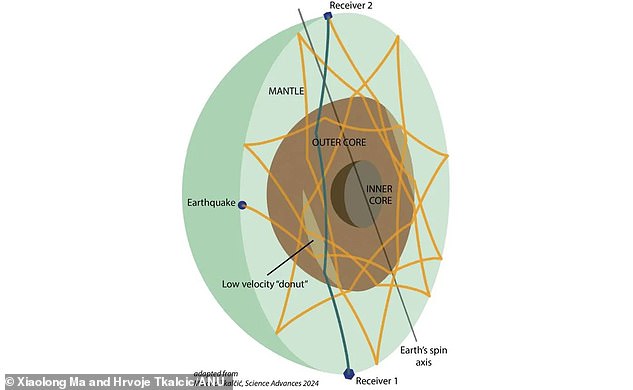
Our planet consists of four primary layers. the exterior crust, the partly molten mantle, a liquid metallic outer core, and a solid metallic inner core.
As tectonic plates shift within the Earth's crust, they trigger earthquakes which generate seismic waves that radiate outward through the planet’s various layers.
Leveraging the global network of seismic monitoring stations, Researchers can observe how the waves propagate and use this information to forecast the circumstances beneath the water's surface.
Researchers typically focus on the large, strong wavefronts that circulate globally within the initial hour following an earthquake.
Nevertheless, Professor Tkalčić and his co-author Dr Xiaolong Ma managed to identify this pattern by examining the subtle remnants of waves that persisted for several hours following the primary shock.
The technique demonstrated that seismic waves propagating close to the poles moved at a quicker pace compared to those nearer to the equator.
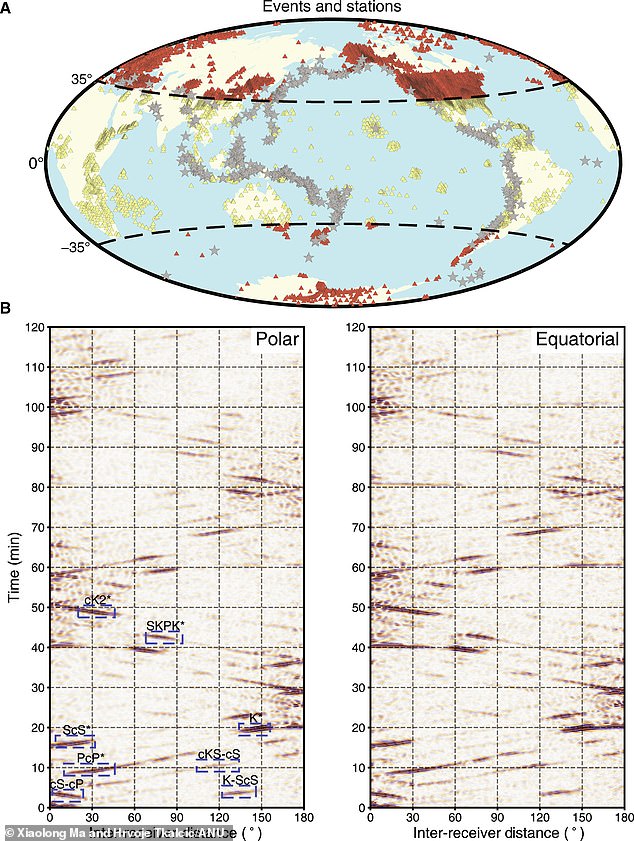
When they compared their findings with various models of the Earth’s interior, Professor Tkalčić and Dr. Ma discovered that the observations were most accurately described by the existence of an extensive subterranean ‘torus,’ or doughnut-shaped area.
They forecast that this area is solely located at low latitudes and aligns with the equator close to the upper boundary of the outer core, where the liquid part interfaces with the mantle.
"We're not sure about the precise thickness of the doughnut, but we deduced that it extends several hundred kilometers below the core-mantle boundary," states Professor Tkalčić.
Due to the area's significant importance, finding these could also have deep effects on understanding life both on our planet and others.
The Earth's outer core extends about 2,160 miles (3,480 km), which is somewhat bigger than the size of Mars.
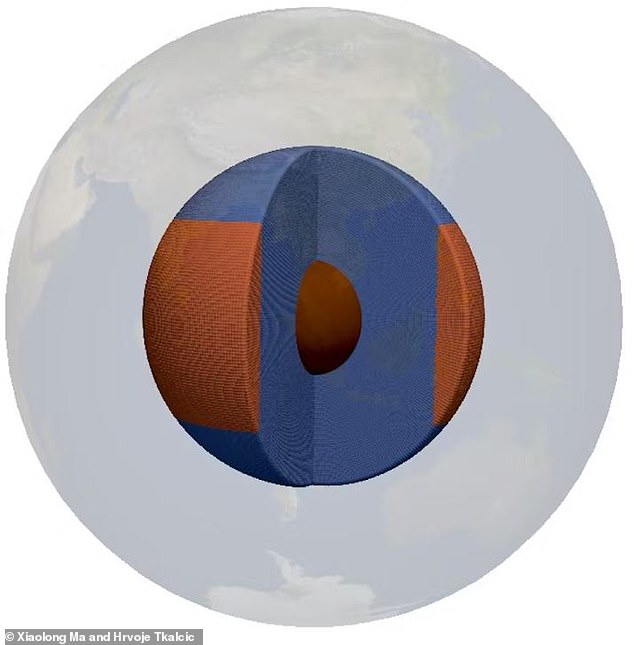
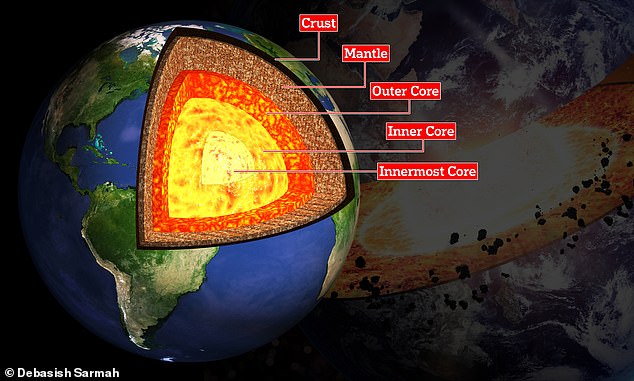
Primarily composed of molten nickel and iron, convection currents along with the planet’s spin cause the metallic fluid in this zone to form elongated vertical whirls stretching from north to south, similar to colossal water tornadoes.
The rotating flows within these molten materials function akin to a dynamo, generating the Earth's magnetic field.
As this donut-shaped area has risen to the upper part of the liquid outer core, it implies that it might contain an abundance of lighter elements such as silicon, sulfur, oxygen, hydrogen, or carbon.
Professor Tkalčić states: "Our discoveries are intriguing as this reduced speed within the liquid core suggests a significant presence of lightweight chemical elements in those areas, which would consequently decelerate the seismic waves."
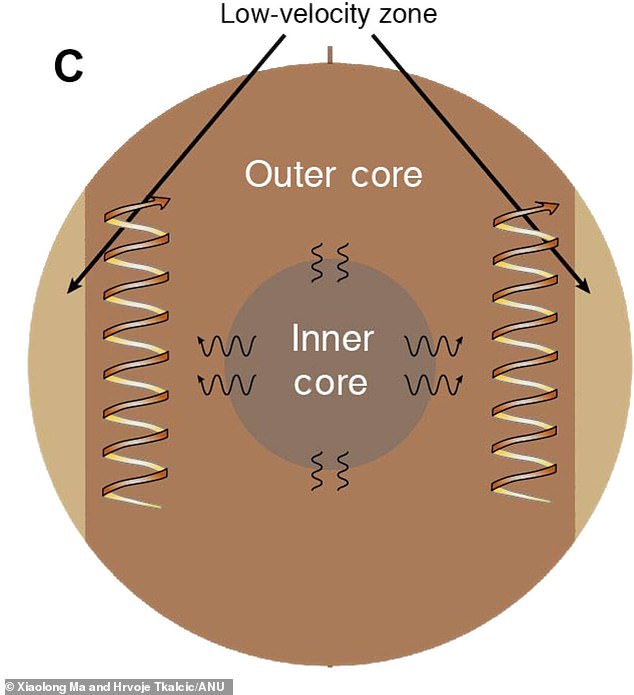
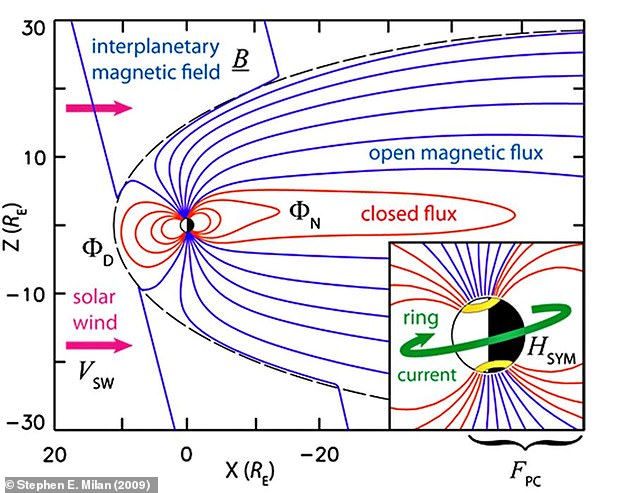
These lightweight components, along with variations in temperature, aid in mixing the liquids within the outer core.
If not for that vigorous movement to power the planet's inner generator, the Earth's magnetic field may never have come into being.
In the absence of the magnetic field, the planet's surface would face an unrelenting assault from charged particles. From the sun, which has the power to damage the DNA of living organisms.
This ring-like area could thus be an essential clue in understanding how life emerged on Earth and what we should search for when identifying habitable planets beyond our own.
Dr. Tkalčić concludes: "Our findings might encourage further investigation into the magnetic fields of both our planet and others."


No comments:
Post a Comment